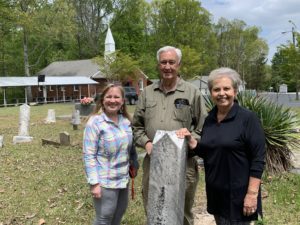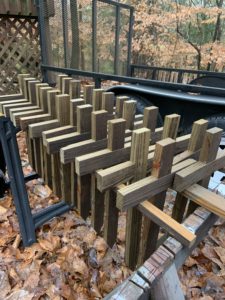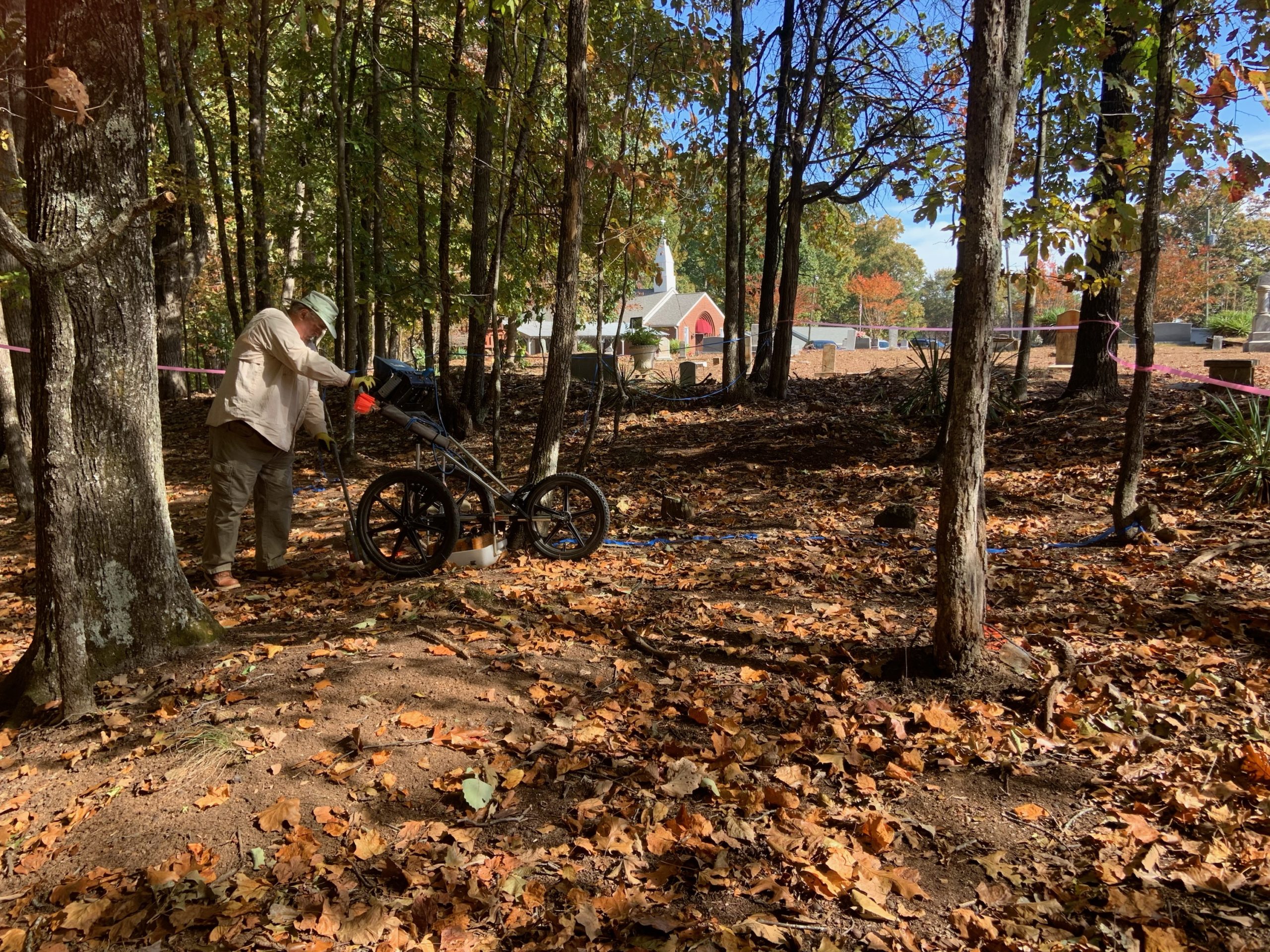From a historical standpoint, the issue of slavery is a difficult subject matter. The research is time consuming. It is also an emotional topic – most often just avoided. For many individuals, it is difficult to talk about and write about the fact that slavery was a part of our community’s past. It is hard to find the right words, but it is an important story to tell for the lessons learned that can come from it and the remembrance of the enslaved individuals that have been forgotten by time. The Suwanee Creek Chapter, National Society Daughters of the American Revolution (NSDAR) and Sandy Wood with Island Ford Baptist Church, are working to tell an important local story. Through an ongoing cemetery preservation project at Island Ford Baptist Church that has led to the discovery of many unknown chapters of history, the unmarked graves of possibly twenty-five African American slaves have been located by ground penetrating radar. This project has been supported by the Suwanee Creek Chapter, NSDAR and its members, the church and church family members, and the Sugar Hill Historic Preservation Society.

Island Ford Baptist Church was established in 1832, close to where early settlers forded the river at Bowman’s Island and the Chattahoochee River. The church is one of the oldest in Gwinnett County and what is now the Sugar Hill community. The presbytery included Reverend Silas King, Reverend Richard Phillips, as well as Deacons Joseph Morgan, Sam Crowe, and John Hammond. Joseph Morgan was a planter who owned a plantation of several hundred acres along the Chattahoochee River. Charter members of the church included Edmund Bagby, John Calaway, and fourteen other individuals. The first church building was primitive and constructed out of rough-hewn logs. The first organizational meeting in the building was held in February of 1833. After nearly 191 years the church is still functioning and meeting regularly – it is one of the most historically significant churches in Gwinnett County. The cemetery, in addition to the twenty-five potential African American slave graves, has around a hundred additional unmarked graves and several hundred marked graves that date from its early history to modern times.

Like any place as old as Island Ford Baptist Church, there are stories that are passed down through the generations. For years, members of the church have shared knowledge of where they were told by elderly family and church members that African American slaves were buried in the cemetery. A document, recently discovered from November 13, 1835, corroborates the membership of African American slaves at the church. Just like today a member of one church could request, through a letter, membership at another church. On that day in 1835, Edmund Bagby requested a change of membership for his “property” – a black woman referred to as Sister Abby. The recipient of the letter was Deacon Sam Crowe. Prior to her transfer, she had been attending the Baptist Church of Christ at Shoal Creek. It is likely that there were other African American slave members of Island Ford Baptist Church and that they would have been buried just outside the regular church cemetery, with graves originally marked with just fieldstones. Sister Abby could be laid to rest in one of the twenty-five unmarked graves.
There’s a healing and a freedom that often comes from uncovering and confronting the past. In a labor of love, the Suwanee Creek Chapter, NSDAR has partnered with Island Ford Baptist Church members and many others on a mission to clean and repair grave markers, identify the graves of veterans, map the cemetery, collect and transcribe historic church documents, and document the past. The Suwanee Creek Chapter, NSDAR was awarded the Phyllis & Martin Hughes Preservation Award for 2022 by the Gwinnett Historical Society for this project. The unmarked graves of African American slaves will be marked with hand-made crosses and the area will be protected by memorial fencing. The history and stories of these enslaved people will be honored and told to future generations through the placement of a memorial marker. Once forgotten, these individuals will now be remembered.
FEATURED PHOTO: Len Strozier utilizes ground penetrating radar at Island Ford Baptist Church to locate unmarked slave graves. Photo courtesy of Sandy Wood and Donna Bowlick.




